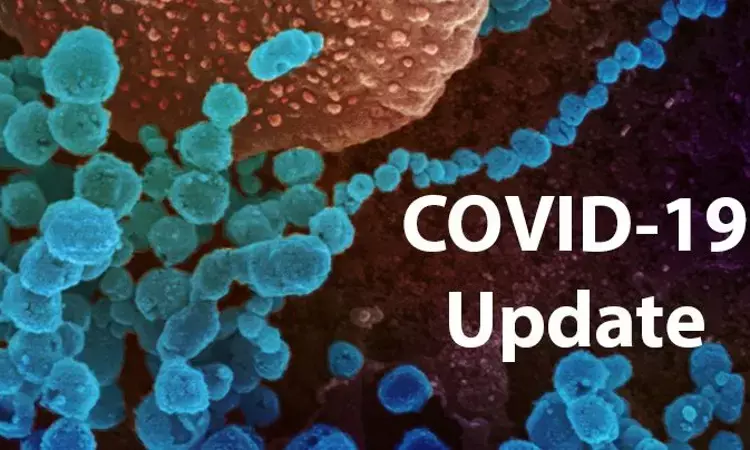- Home
- Medical news & Guidelines
- Anesthesiology
- Cardiology and CTVS
- Critical Care
- Dentistry
- Dermatology
- Diabetes and Endocrinology
- ENT
- Gastroenterology
- Medicine
- Nephrology
- Neurology
- Obstretics-Gynaecology
- Oncology
- Ophthalmology
- Orthopaedics
- Pediatrics-Neonatology
- Psychiatry
- Pulmonology
- Radiology
- Surgery
- Urology
- Laboratory Medicine
- Diet
- Nursing
- Paramedical
- Physiotherapy
- Health news
- Fact Check
- Bone Health Fact Check
- Brain Health Fact Check
- Cancer Related Fact Check
- Child Care Fact Check
- Dental and oral health fact check
- Diabetes and metabolic health fact check
- Diet and Nutrition Fact Check
- Eye and ENT Care Fact Check
- Fitness fact check
- Gut health fact check
- Heart health fact check
- Kidney health fact check
- Medical education fact check
- Men's health fact check
- Respiratory fact check
- Skin and hair care fact check
- Vaccine and Immunization fact check
- Women's health fact check
- AYUSH
- State News
- Andaman and Nicobar Islands
- Andhra Pradesh
- Arunachal Pradesh
- Assam
- Bihar
- Chandigarh
- Chattisgarh
- Dadra and Nagar Haveli
- Daman and Diu
- Delhi
- Goa
- Gujarat
- Haryana
- Himachal Pradesh
- Jammu & Kashmir
- Jharkhand
- Karnataka
- Kerala
- Ladakh
- Lakshadweep
- Madhya Pradesh
- Maharashtra
- Manipur
- Meghalaya
- Mizoram
- Nagaland
- Odisha
- Puducherry
- Punjab
- Rajasthan
- Sikkim
- Tamil Nadu
- Telangana
- Tripura
- Uttar Pradesh
- Uttrakhand
- West Bengal
- Medical Education
- Industry
Reduced HDL cholesterol tied to prolonged COVID-19 virus clearance time: Study

According to the reports of a recently published study, ALT, GLU and HDLC were independent factors that influenced the clearance time of SARS Cov 2 virus from the body .Further Reduced HDLC was a risk factor contributing to the prolonged virus clearance time. The findings have been published in Respiratory Medicine.
The clearance of COVID-19 in the human body is one of the important indicators for the recovery of COVID-19 patients. Some studies have found that the average time from the beginning of symptom onsets to the first negative test of throat swab SARS-CoV-2 was 9.5–11 days. Infected or asymptomatic carriers of SARS-CoV-2 are the source of infection, so removing viruses from the human body is one of the key factors for controlling COVID-19.
Clinically, there are some patients with positive SARS-CoV-2 nucleic acid for a long time. This is a first of its kind study which retrospectively analyzed the clinical data of these patients in order to understand the relevant factors that affected virus clearance.Researchers undertook this study with the aim to understand the relevant factors that affect SARS-COV-2 clearance time.
For the study population, from January 29 to March 15, 2020, the clinic data managed by Beijing aid medical in Wuhan city were collected retrospectively on the west campus (single-center) of the Union Hospital of Tongji Medical College affiliated Huazhong University of Science and Technology. Further, the clinical data of 115 COVID-19 patients with SARS-COV-2 nucleic acid positive time exceeding 14 days were collected retrospectively, and the relationship between clinical characteristics, chest CT scans, blood cells, biochemical indicators, and the time of viral nucleic acid turning negative were analyzed.
On data analysis, the following facts emerged.
- The time from symptom onsets to nucleic acid turning negative was (32.5 ± 8.7) days in this group of patients.
- The time of nucleic acid turning negative: no fever group was longer than fever group, diabetes group was longer than no comorbidity group, elevated levels of ALT (alanine aminotransferase), or GLU (fasting blood glucose) group, decreased levels of ALB (albumin) group or HDLC (high-density lipoprotein cholesterol) group was longer than it's normal group separately (P < 0.05).
- Cox multivariate regression analysis showed that ALT [odds ratio (OR): 2.164 (95% CI: 1.276–3.670), P = 0.004], GLU [OR: 2.064 (95% CI: 1.195–3.566), P = 0.009] and HDLC [OR: 0.527 (95% CI: 0.307–0.907), P = 0.021] were independent factors which affected the time of nucleic acid turning negative.
Based on the findings , the team observed that, ALT, GLU and HDLC were independent factors that influenced the time of nucleic acid turning negative. Although diabetes or hyperglycemia is a known risk factor, HDLC is the first to be identified, so,clinicians should be aware of dyslipidemia in covid-19 patients
"The above research suggests that the SARS-CoV-2 in the most patients was cleared within two weeks, but we also found some COVID-19 patients with SARS-CoV-2 nucleic acid positive exceed two weeks." wrote the team.
For the full article ,click on the link: https://doi.org/10.1016/j.rmed.2020.106218
Primary source: Respiratory Medicine
Dr Satabdi Saha (BDS, MDS) is a practicing pediatric dentist with a keen interest in new medical researches and updates. She has completed her BDS from North Bengal Dental College ,Darjeeling. Then she went on to secure an ALL INDIA NEET PG rank and completed her MDS from the first dental college in the country – Dr R. Ahmed Dental College and Hospital. She is currently attached to The Marwari Relief Society Hospital as a consultant along with private practice of 2 years. She has published scientific papers in national and international journals. Her strong passion of sharing knowledge with the medical fraternity has motivated her to be a part of Medical Dialogues.
Dr Kamal Kant Kohli-MBBS, DTCD- a chest specialist with more than 30 years of practice and a flair for writing clinical articles, Dr Kamal Kant Kohli joined Medical Dialogues as a Chief Editor of Medical News. Besides writing articles, as an editor, he proofreads and verifies all the medical content published on Medical Dialogues including those coming from journals, studies,medical conferences,guidelines etc. Email: drkohli@medicaldialogues.in. Contact no. 011-43720751


